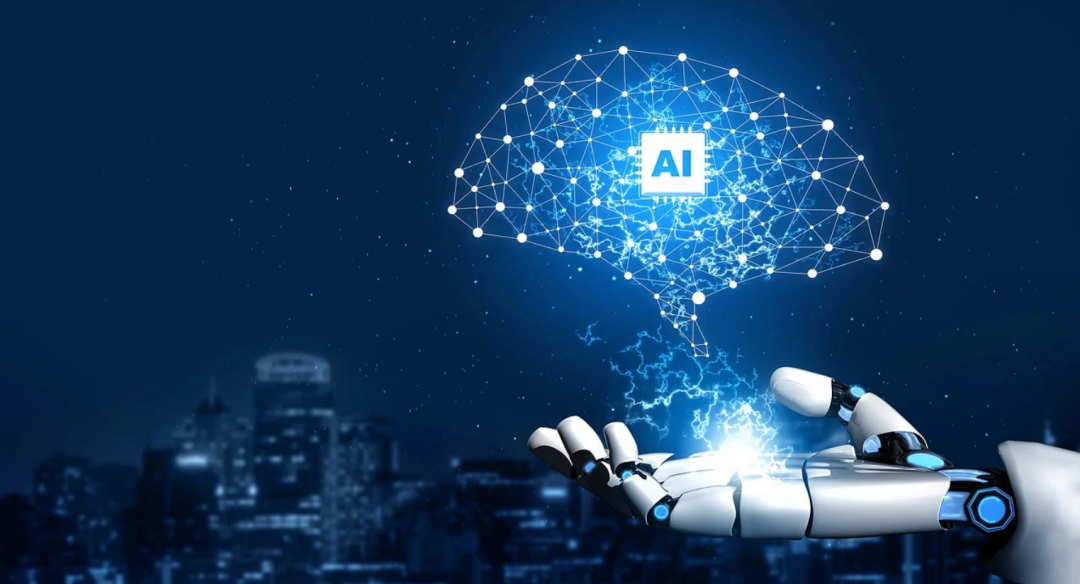
As the next wave of artificial intelligence, the era of “embodied intelligence” arrives, the “iPhone moment” for smart homes will also come as expected.
Author: Su YiEditor: Zi Qi
At the end of 1983, the legendary science fiction writer Isaac Asimov was contacted by the Toronto Star in Canada, inviting him to predict what the world would look like in “35 years”.
“Mobile computing objects or robots will emerge as an essential byproduct, flooding into industries and penetrating home scenarios in the next generation.” This was one of Asimov’s predictions for 2019.Although the penetration of robots into home scenarios did not occur on time in 2019, as we enter 2023, the world’s focus is gradually shifting from “general artificial intelligence” to “embodied intelligence“, and Asimov’s predicted future has finally welcomed more specific application scenarios.In simple terms, embodied intelligence refers to “artificial intelligence with a body“, possessing the ability to perceive, understand, decide, and act, allowing it to perceive and learn about the physical world from a “first-person” perspective, interacting with the environment and exhibiting intelligent behavior more naturally.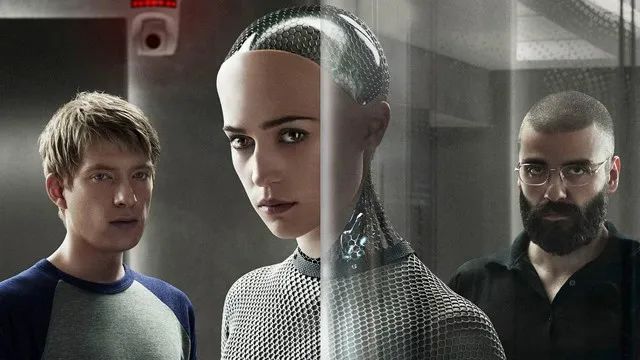 The sci-fi movie “Ex Machina”Such understanding, adaptation, and interaction with the environment make embodied intelligence often paint a desirable picture of future home life. For example, embodied intelligence can provide instant personalized services by understanding user behavior and perceiving environmental changes, achieving intelligent management and control of the entire home scenario. In other words, the intelligent home life experiences that could only appear in sci-fi movies are expected to be realized based on embodied intelligence.This year, the industry has put forward clearer expectations for the development of embodied intelligence. In March, Google, in collaboration with the Technical University of Berlin, released the multimodal embodied visual language model PaLM-E, which can generate action plans for a mobile robot and execute them automatically with just the instruction “hand me the cookies from the drawer”; by May, NVIDIA CEO Jensen Huang openly stated that “the next wave of artificial intelligence is embodied intelligence”; shortly after, Tesla CEO Elon Musk predicted that the demand for humanoid robots would far exceed that of cars, reaching 10 billion units, and humanoid robots are one of the best forms to achieve embodied intelligence.
The sci-fi movie “Ex Machina”Such understanding, adaptation, and interaction with the environment make embodied intelligence often paint a desirable picture of future home life. For example, embodied intelligence can provide instant personalized services by understanding user behavior and perceiving environmental changes, achieving intelligent management and control of the entire home scenario. In other words, the intelligent home life experiences that could only appear in sci-fi movies are expected to be realized based on embodied intelligence.This year, the industry has put forward clearer expectations for the development of embodied intelligence. In March, Google, in collaboration with the Technical University of Berlin, released the multimodal embodied visual language model PaLM-E, which can generate action plans for a mobile robot and execute them automatically with just the instruction “hand me the cookies from the drawer”; by May, NVIDIA CEO Jensen Huang openly stated that “the next wave of artificial intelligence is embodied intelligence”; shortly after, Tesla CEO Elon Musk predicted that the demand for humanoid robots would far exceed that of cars, reaching 10 billion units, and humanoid robots are one of the best forms to achieve embodied intelligence.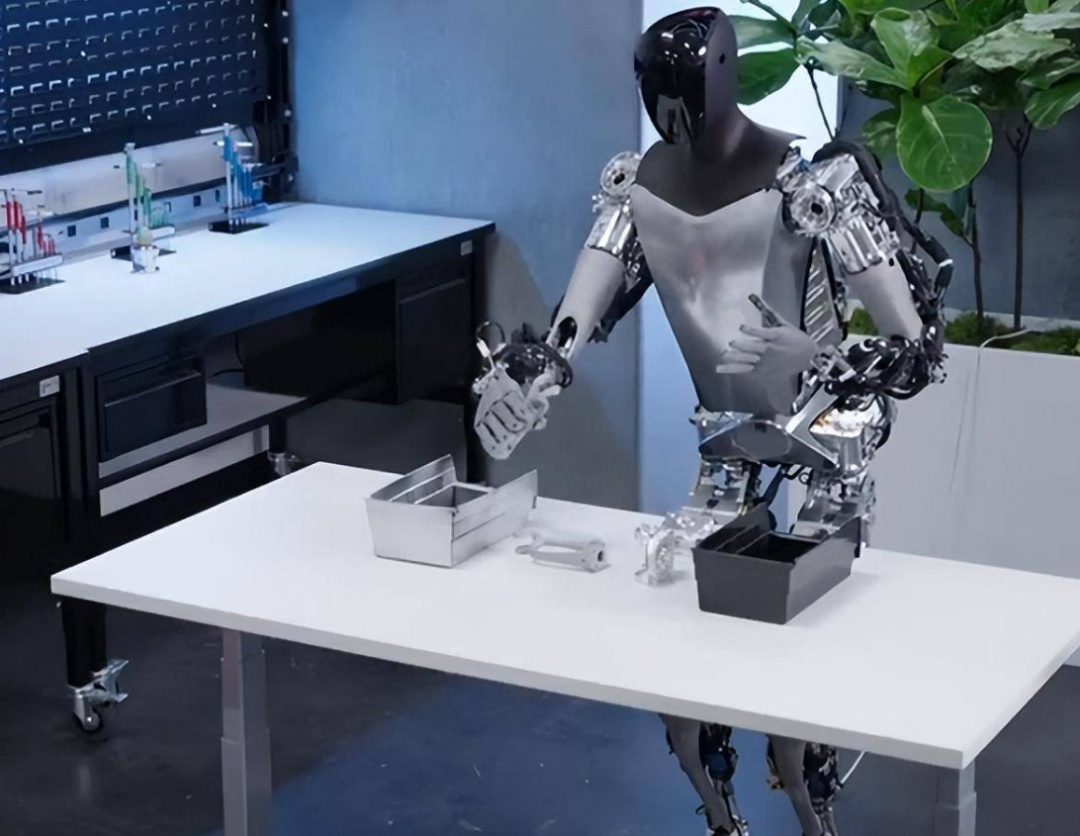 The Optimus robot released by MuskFrom both the direction of technological evolution and application space, embodied intelligence will be one of the important trends in future technological development. As this technology matures, the top-level technological leap in smart homes is expected to accelerate, and the era of embodied intelligence in smart homes will inevitably arrive faster.The Ultimate Vision of Smart Homes:Moving Towards the Era of Embodied IntelligenceAs early as 1950, Alan Turing, the “father of computers and artificial intelligence”, attempted to verify the idea that “machines can think like humans“, opening a door for the subsequent formation and development of the concept of embodied intelligence. However, despite two waves of artificial intelligence following this, embodied intelligence seemed to remain in a long dormant period, failing to achieve industrial progress.Only now, with the arrival of the third wave of artificial intelligence, large models have pushed computers to a new historical turning point, has the industry rekindled its yearning for embodied intelligence.Today, not only Google, Tesla, and NVIDIA are publicly betting on embodied intelligence, but discussions about embodied intelligence in the industry are also heating up, and China’s smart home sector is directly anchoring this future. For example, Yingstone Network revealed in its 2023 semi-annual report: “The company is actively laying out and conducting forward-looking research on embodied intelligence robots for the consumer end“.Looking back at Yingstone’s 2022 annual report, it is not difficult to find that even before the concept of embodied intelligence was “hyped”, it had already made accurate predictions about the ultimate vision of smart homes. Yingstone believes that the fourth stage of smart home development should achieve “personalized intelligent services centered on people”, which coincides perfectly with the future depicted by the era of embodied intelligence in smart homes.
The Optimus robot released by MuskFrom both the direction of technological evolution and application space, embodied intelligence will be one of the important trends in future technological development. As this technology matures, the top-level technological leap in smart homes is expected to accelerate, and the era of embodied intelligence in smart homes will inevitably arrive faster.The Ultimate Vision of Smart Homes:Moving Towards the Era of Embodied IntelligenceAs early as 1950, Alan Turing, the “father of computers and artificial intelligence”, attempted to verify the idea that “machines can think like humans“, opening a door for the subsequent formation and development of the concept of embodied intelligence. However, despite two waves of artificial intelligence following this, embodied intelligence seemed to remain in a long dormant period, failing to achieve industrial progress.Only now, with the arrival of the third wave of artificial intelligence, large models have pushed computers to a new historical turning point, has the industry rekindled its yearning for embodied intelligence.Today, not only Google, Tesla, and NVIDIA are publicly betting on embodied intelligence, but discussions about embodied intelligence in the industry are also heating up, and China’s smart home sector is directly anchoring this future. For example, Yingstone Network revealed in its 2023 semi-annual report: “The company is actively laying out and conducting forward-looking research on embodied intelligence robots for the consumer end“.Looking back at Yingstone’s 2022 annual report, it is not difficult to find that even before the concept of embodied intelligence was “hyped”, it had already made accurate predictions about the ultimate vision of smart homes. Yingstone believes that the fourth stage of smart home development should achieve “personalized intelligent services centered on people”, which coincides perfectly with the future depicted by the era of embodied intelligence in smart homes.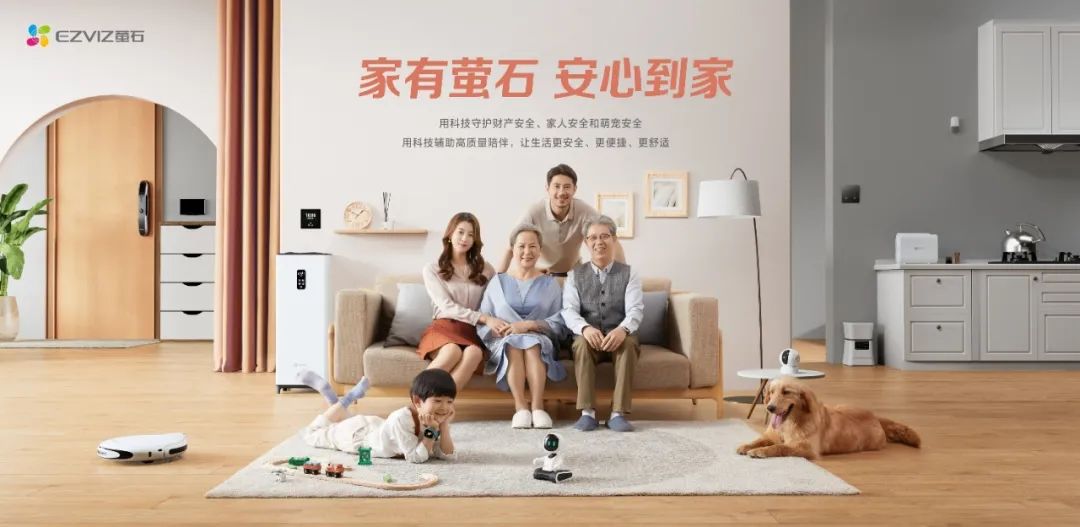 From the integration and intelligence level of smart home products, the development of smart homes can be divided into four stages.The initial stage is the smart single product stage, where home products integrate with information technology to form various smart hardware devices, and traditional home products are endowed with intelligent functions. In this stage, smart appliances represented by smart TVs and smart air conditioners emerged one after another. Although some products improved functionality, their operation still required human intervention, and they operated independently.With advancements in technologies such as the Internet of Things, the interconnectivity of single products gradually increased, leading to the stage of interconnected smart single products. At this point, integrated solutions for smart homes began to appear, allowing products from different brands and categories to achieve scenario linkage. However, due to the difficulty in standardizing communication protocols between devices from different brands, it still could not provide a complete whole-home intelligent solution and system value, and the user experience remained fragmented.Further down the line, when cross-brand and cross-category smart products achieve data intercommunication and interaction, the perception, interaction, connection, and control of the entire home space can be realized, and smart homes begin to move towards the whole-home intelligent system stage. This stage requires smart home products to operate on the same platform, supported by a sufficiently powerful intelligent system as the “central control”, providing a smart linkage experience covering the entire home through user behavior analysis and algorithm optimization. Currently, Huawei, Viomi, and Haier are accelerating towards the whole-home intelligent stage along different paths.Yingstone’s development goal for its smart home business is the fourth stage of smart homes, which is the next stop for whole-home intelligence: personalized intelligent services centered on people.
From the integration and intelligence level of smart home products, the development of smart homes can be divided into four stages.The initial stage is the smart single product stage, where home products integrate with information technology to form various smart hardware devices, and traditional home products are endowed with intelligent functions. In this stage, smart appliances represented by smart TVs and smart air conditioners emerged one after another. Although some products improved functionality, their operation still required human intervention, and they operated independently.With advancements in technologies such as the Internet of Things, the interconnectivity of single products gradually increased, leading to the stage of interconnected smart single products. At this point, integrated solutions for smart homes began to appear, allowing products from different brands and categories to achieve scenario linkage. However, due to the difficulty in standardizing communication protocols between devices from different brands, it still could not provide a complete whole-home intelligent solution and system value, and the user experience remained fragmented.Further down the line, when cross-brand and cross-category smart products achieve data intercommunication and interaction, the perception, interaction, connection, and control of the entire home space can be realized, and smart homes begin to move towards the whole-home intelligent system stage. This stage requires smart home products to operate on the same platform, supported by a sufficiently powerful intelligent system as the “central control”, providing a smart linkage experience covering the entire home through user behavior analysis and algorithm optimization. Currently, Huawei, Viomi, and Haier are accelerating towards the whole-home intelligent stage along different paths.Yingstone’s development goal for its smart home business is the fourth stage of smart homes, which is the next stop for whole-home intelligence: personalized intelligent services centered on people.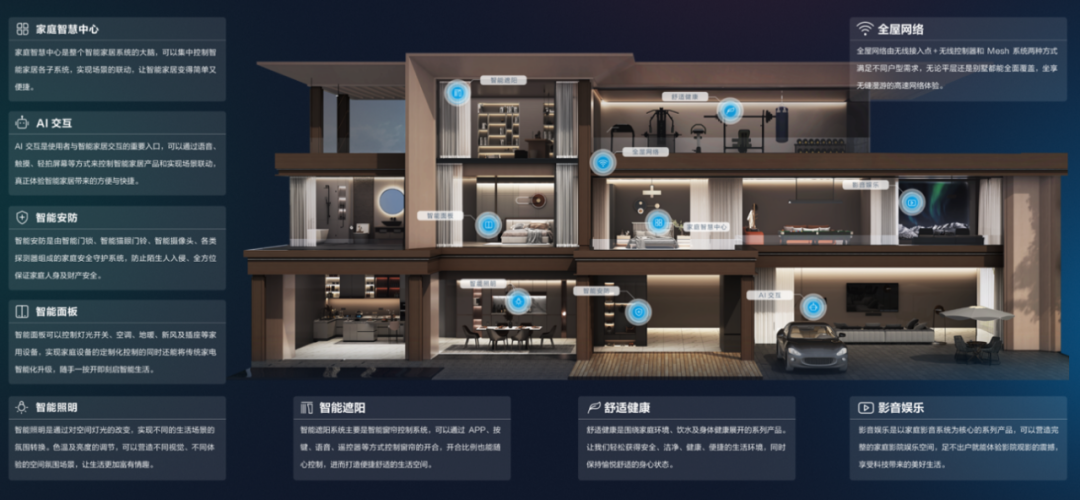 Yingstone believes that as a large amount of IoT perception data and intelligent algorithms, machine learning, big data, and cloud computing technologies deeply integrate, the whole-home intelligent system will be able to more precisely outline user profiles, learn and understand user behavior habits in different times and spaces, and explore user needs, making proactive interactive services possible.On one hand, there is a service value upgrade, where smart homes will meet the deep needs of different groups in various scenarios from health, entertainment, learning, fitness, beauty, to home care; on the other hand, there is a shift in the focus of intelligence, where smart homes will transition from “the intelligence of home hardware facilities” to “the intelligence of services centered on people”, emphasizing a foundation based on the essence of life, focusing on serving people, and striving to provide users with personalized, seamless proactive intelligent services.This “people-centered” concept can fully be realized through the application of embodied intelligence in the smart home field.With embodied intelligence, smart homes will truly transition from “simple interaction” to “deep proactive communication“, from “isolated functions” to “multi-party intelligent linkage“, and from “passively receiving commands” to “actively providing services“.By collecting, perceiving, and understanding user needs and their changes, embodied intelligence can enable smart homes to proactively adapt to users’ lifestyles, providing smarter, more personalized, and more humanized services. For example, lighting can adjust brightness and color temperature according to user preferences, air conditioning can adjust temperature and wind speed based on indoor and outdoor temperature differences and user preferences, especially benefiting those with mobility issues in their daily living needs.Once, through the intelligent home world depicted by Asimov, “a robot with a smart brain takes care of all the trivial household chores, completing a series of mechanical tasks” became an important vision for many people about the future. Currently, although realizing this vision still requires overcoming many difficulties, and although embodied intelligence has only recently been brought to the spotlight, smart home companies like Yingstone have clearly begun to accelerate on the right track.Yingstone is poised for action:Building a Complete Vertical Integrated Service CapabilityThe deepening of AI technology in smart home scenarios is still ongoing.According to the “2023 China Smart Home (AIoH) Development White Paper” released by iResearch, the overall penetration of AI technology in the smart home industry was about 25% in 2022. As the maturity of technology and users’ comfort with home life improve, it is expected that by 2025, the overall penetration of AI technology in smart homes will approach 50%.However, even if the penetration rate of AI technology in smart home scenarios increases, it does not necessarily mean that the next key breakthrough point is imminent. Currently, the application of AI technology in various smart home products is still mainly in the form of smart visual modules and smart voice modules. For smart home products or robots to truly enter the era of embodied intelligence, they still need to overcome technical bottlenecks such as understanding commands, decomposing tasks, and recognizing objects, and develop strong multimodal perception and understanding capabilities.
Yingstone believes that as a large amount of IoT perception data and intelligent algorithms, machine learning, big data, and cloud computing technologies deeply integrate, the whole-home intelligent system will be able to more precisely outline user profiles, learn and understand user behavior habits in different times and spaces, and explore user needs, making proactive interactive services possible.On one hand, there is a service value upgrade, where smart homes will meet the deep needs of different groups in various scenarios from health, entertainment, learning, fitness, beauty, to home care; on the other hand, there is a shift in the focus of intelligence, where smart homes will transition from “the intelligence of home hardware facilities” to “the intelligence of services centered on people”, emphasizing a foundation based on the essence of life, focusing on serving people, and striving to provide users with personalized, seamless proactive intelligent services.This “people-centered” concept can fully be realized through the application of embodied intelligence in the smart home field.With embodied intelligence, smart homes will truly transition from “simple interaction” to “deep proactive communication“, from “isolated functions” to “multi-party intelligent linkage“, and from “passively receiving commands” to “actively providing services“.By collecting, perceiving, and understanding user needs and their changes, embodied intelligence can enable smart homes to proactively adapt to users’ lifestyles, providing smarter, more personalized, and more humanized services. For example, lighting can adjust brightness and color temperature according to user preferences, air conditioning can adjust temperature and wind speed based on indoor and outdoor temperature differences and user preferences, especially benefiting those with mobility issues in their daily living needs.Once, through the intelligent home world depicted by Asimov, “a robot with a smart brain takes care of all the trivial household chores, completing a series of mechanical tasks” became an important vision for many people about the future. Currently, although realizing this vision still requires overcoming many difficulties, and although embodied intelligence has only recently been brought to the spotlight, smart home companies like Yingstone have clearly begun to accelerate on the right track.Yingstone is poised for action:Building a Complete Vertical Integrated Service CapabilityThe deepening of AI technology in smart home scenarios is still ongoing.According to the “2023 China Smart Home (AIoH) Development White Paper” released by iResearch, the overall penetration of AI technology in the smart home industry was about 25% in 2022. As the maturity of technology and users’ comfort with home life improve, it is expected that by 2025, the overall penetration of AI technology in smart homes will approach 50%.However, even if the penetration rate of AI technology in smart home scenarios increases, it does not necessarily mean that the next key breakthrough point is imminent. Currently, the application of AI technology in various smart home products is still mainly in the form of smart visual modules and smart voice modules. For smart home products or robots to truly enter the era of embodied intelligence, they still need to overcome technical bottlenecks such as understanding commands, decomposing tasks, and recognizing objects, and develop strong multimodal perception and understanding capabilities.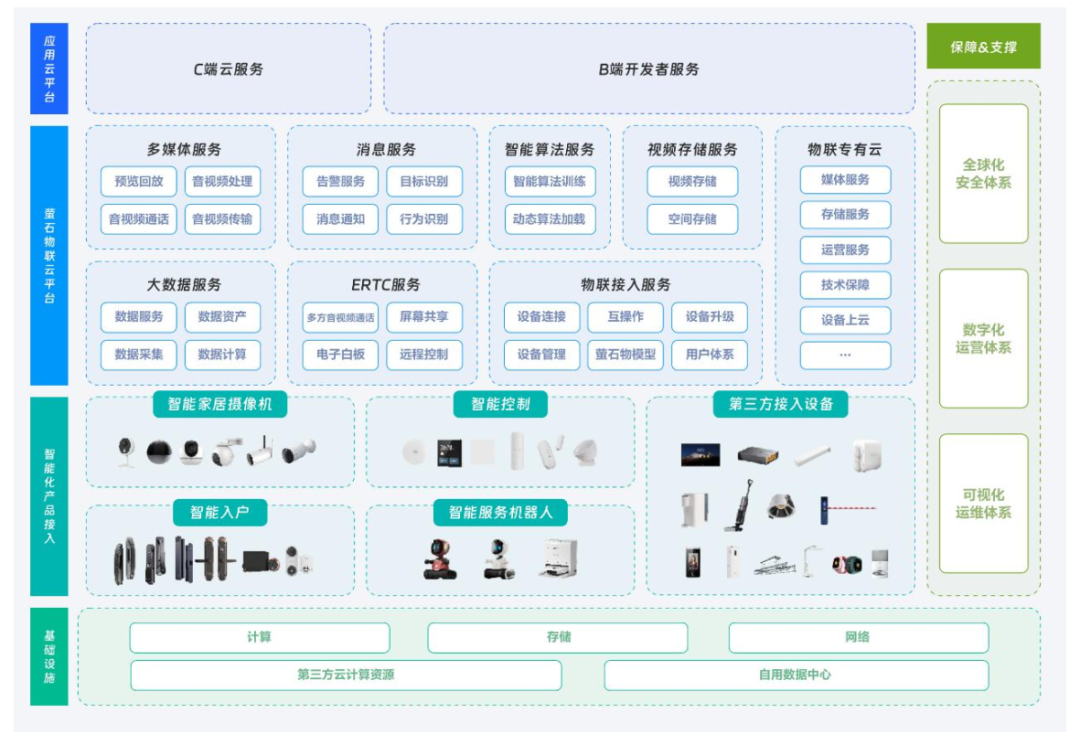 As one of the few AIoT companies in the industry with complete vertical integrated service capabilities from hardware design, research and development, manufacturing to IoT cloud platforms, Yingstone possesses the potential to lead the smart home industry into the era of embodied intelligence in terms of technological reserves, application strength, and development space.First, from the perspective of human-computer interaction methods in the era of embodied intelligence, vision and voice will still occupy a major proportion. Among them, the visual technology involved in deep human-computer interaction is a core capability that Yingstone has long been committed to.For example, Yingstone has established an absolute leading advantage in visual products such as smart home cameras, facial video locks, smart doorbells, smart cleaning robots, and smart companion robots, using home IoT devices as carriers, allowing robots to evolve and iterate by understanding and perceiving the external world. Combined with new-generation technologies such as cloud computing, intelligent algorithms, and big data, Yingstone is expected to develop visual technologies with intelligent application capabilities more smoothly.
As one of the few AIoT companies in the industry with complete vertical integrated service capabilities from hardware design, research and development, manufacturing to IoT cloud platforms, Yingstone possesses the potential to lead the smart home industry into the era of embodied intelligence in terms of technological reserves, application strength, and development space.First, from the perspective of human-computer interaction methods in the era of embodied intelligence, vision and voice will still occupy a major proportion. Among them, the visual technology involved in deep human-computer interaction is a core capability that Yingstone has long been committed to.For example, Yingstone has established an absolute leading advantage in visual products such as smart home cameras, facial video locks, smart doorbells, smart cleaning robots, and smart companion robots, using home IoT devices as carriers, allowing robots to evolve and iterate by understanding and perceiving the external world. Combined with new-generation technologies such as cloud computing, intelligent algorithms, and big data, Yingstone is expected to develop visual technologies with intelligent application capabilities more smoothly.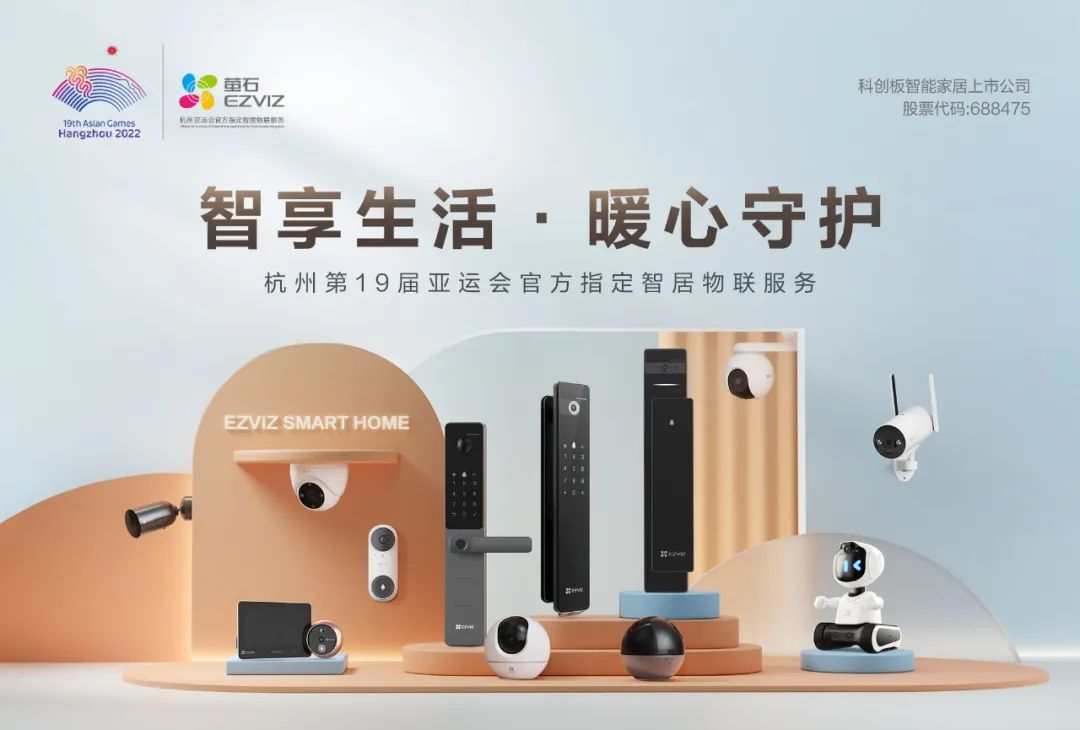 Currently, Yingstone has not only conducted extensive explorations of intelligent services based on these visual home IoT devices, building a complete technical architecture for intelligent applications, but has also created an algorithm store for consumer users, allowing users to choose intelligent algorithms based on actual family scenario needs and quickly customize their own smart home or home-like scenario solutions.At the same time, based on visual technology, Yingstone has developed a “1+4+N” product ecosystem architecture, constructing a multidimensional and multi-level product matrix, and is continuously improving the product foundation of the whole-home intelligent system.Specifically, Yingstone not only applies core visual technology achievements to four core self-developed smart home products: smart home cameras, smart entry, smart control, and smart service robots, but also actively builds an industrial cooperation ecosystem, based on Yingstone’s cloud IoT connection, collaborating with diverse partners to jointly develop innovative products, building a platform-type smart home entry, exploring new scenarios for smart home integration with a more open posture, promoting the evolution and prosperity of the smart home ecosystem, and providing consumers with richer smart living solutions.In addition, Yingstone has developed a dual-main business pattern of “smart home + IoT cloud platform” centered around the cloud platform.This means that Yingstone is not a traditional smart home company focused solely on single hardware product development, but rather a company driven by actual user needs, based on an IoT cloud platform, characterized by visual interaction, and one of the few in the industry with integrated AIoT service capabilities. Its smart home products and value-added services can respond, iterate, and expand quickly based on user needs, providing a highly complete and integrated smart home experience.Overall, Yingstone has established a relatively complete technical system in the smart home industry, with three major technical branches covering visual technology, smart hardware, and cloud platforms, creating a solid competitive foothold for its long-term development, which is also its technical confidence in rapidly moving towards the era of embodied intelligence in smart homes.Moreover, it is worth noting that in addition to the continuous accumulation of these three advantages, a closer look at Yingstone’s 2023 semi-annual report reveals that Yingstone has already begun forward-looking technological layouts for the era of embodied intelligence.
Currently, Yingstone has not only conducted extensive explorations of intelligent services based on these visual home IoT devices, building a complete technical architecture for intelligent applications, but has also created an algorithm store for consumer users, allowing users to choose intelligent algorithms based on actual family scenario needs and quickly customize their own smart home or home-like scenario solutions.At the same time, based on visual technology, Yingstone has developed a “1+4+N” product ecosystem architecture, constructing a multidimensional and multi-level product matrix, and is continuously improving the product foundation of the whole-home intelligent system.Specifically, Yingstone not only applies core visual technology achievements to four core self-developed smart home products: smart home cameras, smart entry, smart control, and smart service robots, but also actively builds an industrial cooperation ecosystem, based on Yingstone’s cloud IoT connection, collaborating with diverse partners to jointly develop innovative products, building a platform-type smart home entry, exploring new scenarios for smart home integration with a more open posture, promoting the evolution and prosperity of the smart home ecosystem, and providing consumers with richer smart living solutions.In addition, Yingstone has developed a dual-main business pattern of “smart home + IoT cloud platform” centered around the cloud platform.This means that Yingstone is not a traditional smart home company focused solely on single hardware product development, but rather a company driven by actual user needs, based on an IoT cloud platform, characterized by visual interaction, and one of the few in the industry with integrated AIoT service capabilities. Its smart home products and value-added services can respond, iterate, and expand quickly based on user needs, providing a highly complete and integrated smart home experience.Overall, Yingstone has established a relatively complete technical system in the smart home industry, with three major technical branches covering visual technology, smart hardware, and cloud platforms, creating a solid competitive foothold for its long-term development, which is also its technical confidence in rapidly moving towards the era of embodied intelligence in smart homes.Moreover, it is worth noting that in addition to the continuous accumulation of these three advantages, a closer look at Yingstone’s 2023 semi-annual report reveals that Yingstone has already begun forward-looking technological layouts for the era of embodied intelligence.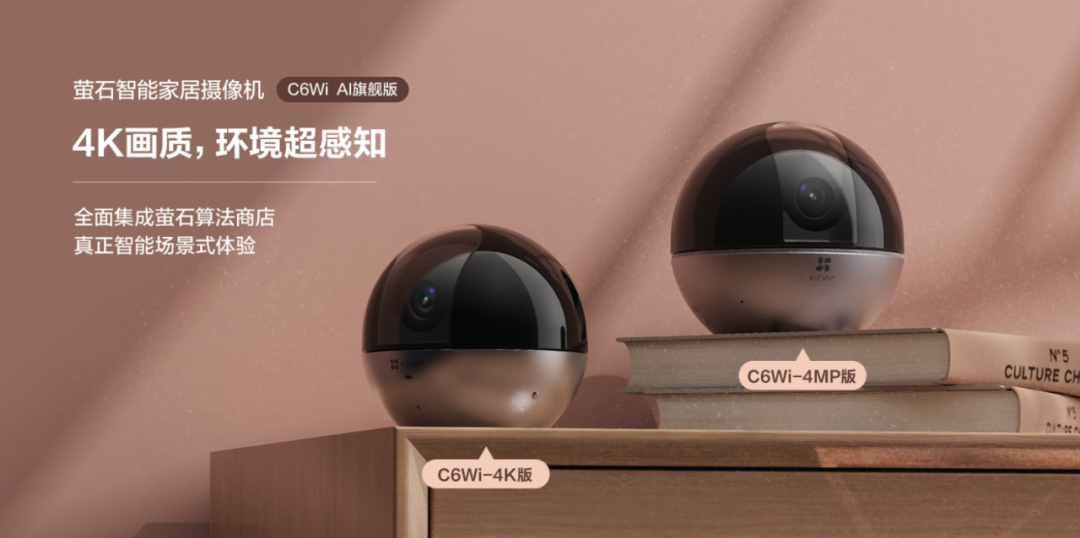 For example, in the project “Indoor Behavior Recognition Based on Home Edge Computing”, Yingstone aims to recommend more precise smart home scenario modes to users through indoor smart home cameras and smart sensors, combined with edge computing technology of home devices. In another project, “Intelligent Service Upgrade R&D Based on AGI”, Yingstone will upgrade existing artificial intelligence technologies based on large model technology, exploring new application modes in dialogue and video fields…Whether from trend prediction, technological research and development progress, or business acumen, Yingstone, which accurately anchors and grasps key development nodes in the industry, is very likely to become a leader in the era of embodied intelligence in smart homes.Comments from “Yi Observation”This May, Beijing released “Several Measures to Promote the Innovation and Development of General Artificial Intelligence”, clearly proposing to “explore new paths for general intelligence, embodied intelligence, and brain-like intelligence”, and “promote research and application of embodied intelligence systems, breaking through the perception, cognition, and decision-making technologies of robots under complex conditions such as open environments, generalized scenarios, and continuous tasks.” Undoubtedly, the dawn of the era of embodied intelligence will prompt a transformation across various industries. For example, dangerous and complex production work can be completely replaced, leading to a leap in productivity; doctors can perform higher precision remote surgeries or deeply assist patients in rehabilitation; personalized learning assistance will be realized under immersive human-computer interaction.From industrial manufacturing, healthcare, to education, and beyond. But what is most closely related to everyone’s daily life is still the smart home field, which embodies people’s yearning for a “sci-fi” intelligent life.In March of this year, during the opening speech of NVIDIA’s GTC Developer Conference 2023, Jensen Huang referred to the current stage of artificial intelligence technology development as the “iPhone moment” four times. It is foreseeable that when the next wave of artificial intelligence, the era of “embodied intelligence”, arrives, the “iPhone moment” for smart homes will also come as expected.After all, the wave of technology continues to surge forward, and new industry singularities will continue to emerge.Following the technological rhythm and progress of smart home companies represented by Yingstone, we can already see the dawn of the era of embodied intelligence in smart homes lighting up.
For example, in the project “Indoor Behavior Recognition Based on Home Edge Computing”, Yingstone aims to recommend more precise smart home scenario modes to users through indoor smart home cameras and smart sensors, combined with edge computing technology of home devices. In another project, “Intelligent Service Upgrade R&D Based on AGI”, Yingstone will upgrade existing artificial intelligence technologies based on large model technology, exploring new application modes in dialogue and video fields…Whether from trend prediction, technological research and development progress, or business acumen, Yingstone, which accurately anchors and grasps key development nodes in the industry, is very likely to become a leader in the era of embodied intelligence in smart homes.Comments from “Yi Observation”This May, Beijing released “Several Measures to Promote the Innovation and Development of General Artificial Intelligence”, clearly proposing to “explore new paths for general intelligence, embodied intelligence, and brain-like intelligence”, and “promote research and application of embodied intelligence systems, breaking through the perception, cognition, and decision-making technologies of robots under complex conditions such as open environments, generalized scenarios, and continuous tasks.” Undoubtedly, the dawn of the era of embodied intelligence will prompt a transformation across various industries. For example, dangerous and complex production work can be completely replaced, leading to a leap in productivity; doctors can perform higher precision remote surgeries or deeply assist patients in rehabilitation; personalized learning assistance will be realized under immersive human-computer interaction.From industrial manufacturing, healthcare, to education, and beyond. But what is most closely related to everyone’s daily life is still the smart home field, which embodies people’s yearning for a “sci-fi” intelligent life.In March of this year, during the opening speech of NVIDIA’s GTC Developer Conference 2023, Jensen Huang referred to the current stage of artificial intelligence technology development as the “iPhone moment” four times. It is foreseeable that when the next wave of artificial intelligence, the era of “embodied intelligence”, arrives, the “iPhone moment” for smart homes will also come as expected.After all, the wave of technology continues to surge forward, and new industry singularities will continue to emerge.Following the technological rhythm and progress of smart home companies represented by Yingstone, we can already see the dawn of the era of embodied intelligence in smart homes lighting up.
END
Founder of “Yi Observation” Su Yi
Former Chief Editor of Sohu Technology Communications
Search “Yi Observation” on Toutiao, Tencent News, Sohu
Search “Su Yi” on Baijiahao, Weibo, Douyin for more
丨Smart Hardware丨Communications丨New Retail丨Artificial Intelligence丨
丨Smart Internet of Vehicles丨Smart Homes丨
For reprints and cooperation, contact WeChat: yiguancha_01